About Our Garden
History
The Earl Burns Miller Japanese Garden was opened in April of 1981, dedicated to the late Earl Burns Miller by his wife Loraine Miller Collins. The Millers were especially focused on using their wealth and influence to better as many people as they could, so they had several projects across Long Beach. On campus, one of their projects was the International House, allowing international students to have a place on campus reserved for them to stay and interact with others. One of many projects in Long Beach was the Miller Foundation, as well as the Miller Children's Hospital.
The Garden itself was designed by Ed Lovell, California State University Long Beach's head landscape architect at the time, with assistance from Professor Koichi Kawana, who had designed many public Japanese gardens across the U.S. Its style was meant to be reminiscent of gardens the Millers had visited in Kyoto, rather than Western or European designs. Heian Period (794-1185 CE) gardens were the most influential towards establishing the main principles of design which gardens follow today, although the Garden follows design cues from most eras of Japanese garden design.
The main design principles of our Garden and many Japanese gardens are:
- Concealment: The garden shows one area at a time, allowing the garden to have multiple landscapes, but making visitors discover others as they walk the garden.
- Borrowed scenery: A layering effect is used in the design of the garden, creating the feeling of a much larger space by utilizing features beyond the garden.
- Asymmetry: Japanese gardens are not symmetrical, which helps create a more natural flow to the garden.
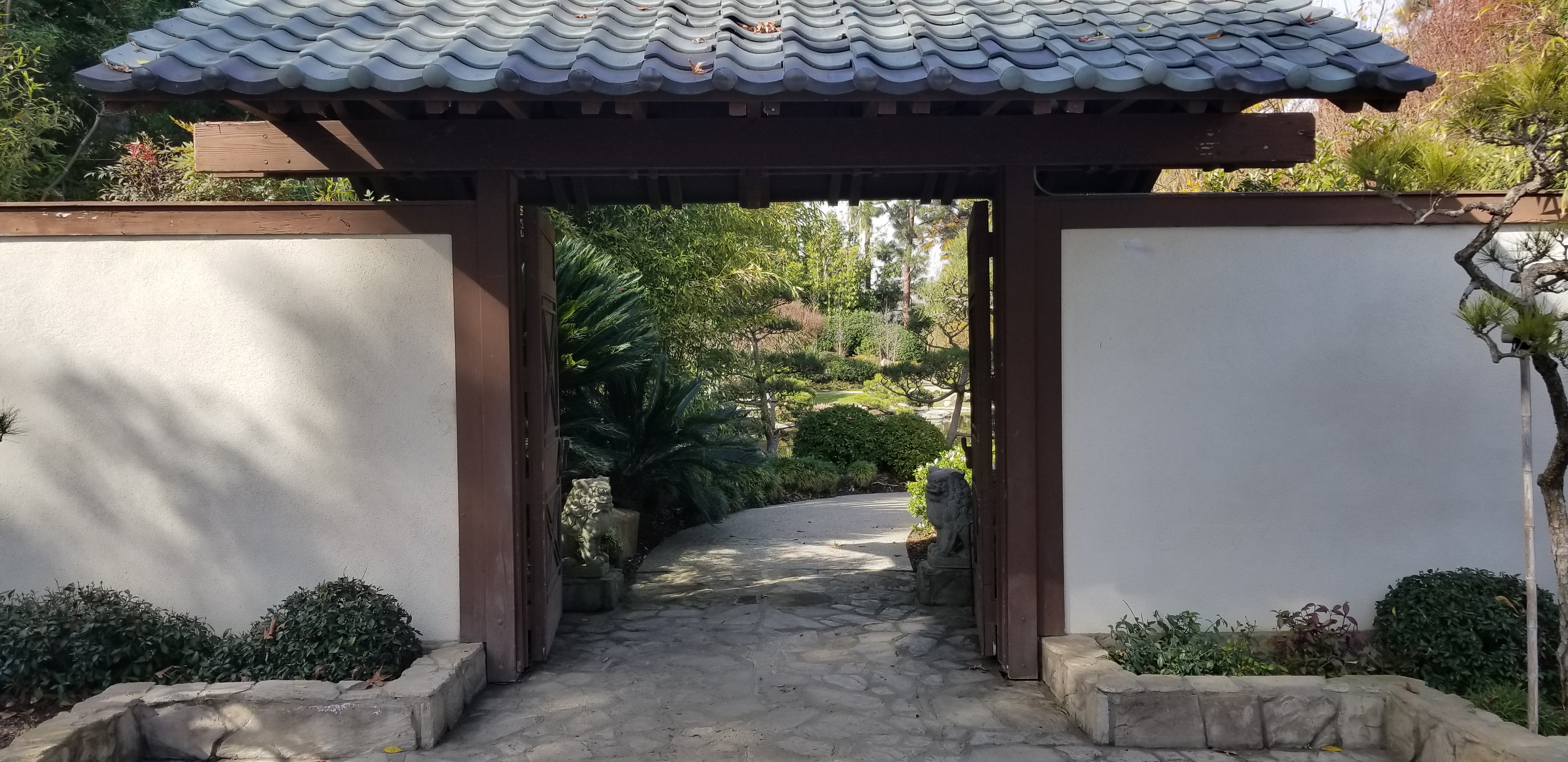
Entering the Garden
Starting from the front gate, this helps create a separation between the outside world and the interior of the Garden. The wall does not extend far, but the berm (the raised hill around the Garden) creates a natural barrier.
Behind the gates are two komainu or lion dogs. Typically in a pair, the two are meant to ward off evil spirits, with one having its mouth open and the other closed. The komainu with its mouth open is referred to as a-gyo, while the one with its mouth closed is referred to as un-gyo. There are a couple connotations to their names, as a and n are the first and last characters of the Japanese and Sanskrit alphabets. This is also significant as the Aum is a sacred syllable in Buddhism, Hinduism and Jainism. The komainu are similar to the Okinawan shisa, serving much of the same purpose, although komainu are used at religious sites, while shisa are used at residences.
The large tree in front is a Chinese Flame Tree, deriving its name from its seasonal transformation where its leaves turn a bright red, making the tree look like it is on fire from a distance. While it may seem odd that there is a Chinese tree in a Japanese garden, this is actually relatively common. Japanese gardens originated from gardens in China from Korea, so many of the plants used were incorporated into Japanese designs. On your next visit, try and find more plants that aren't Japanese.
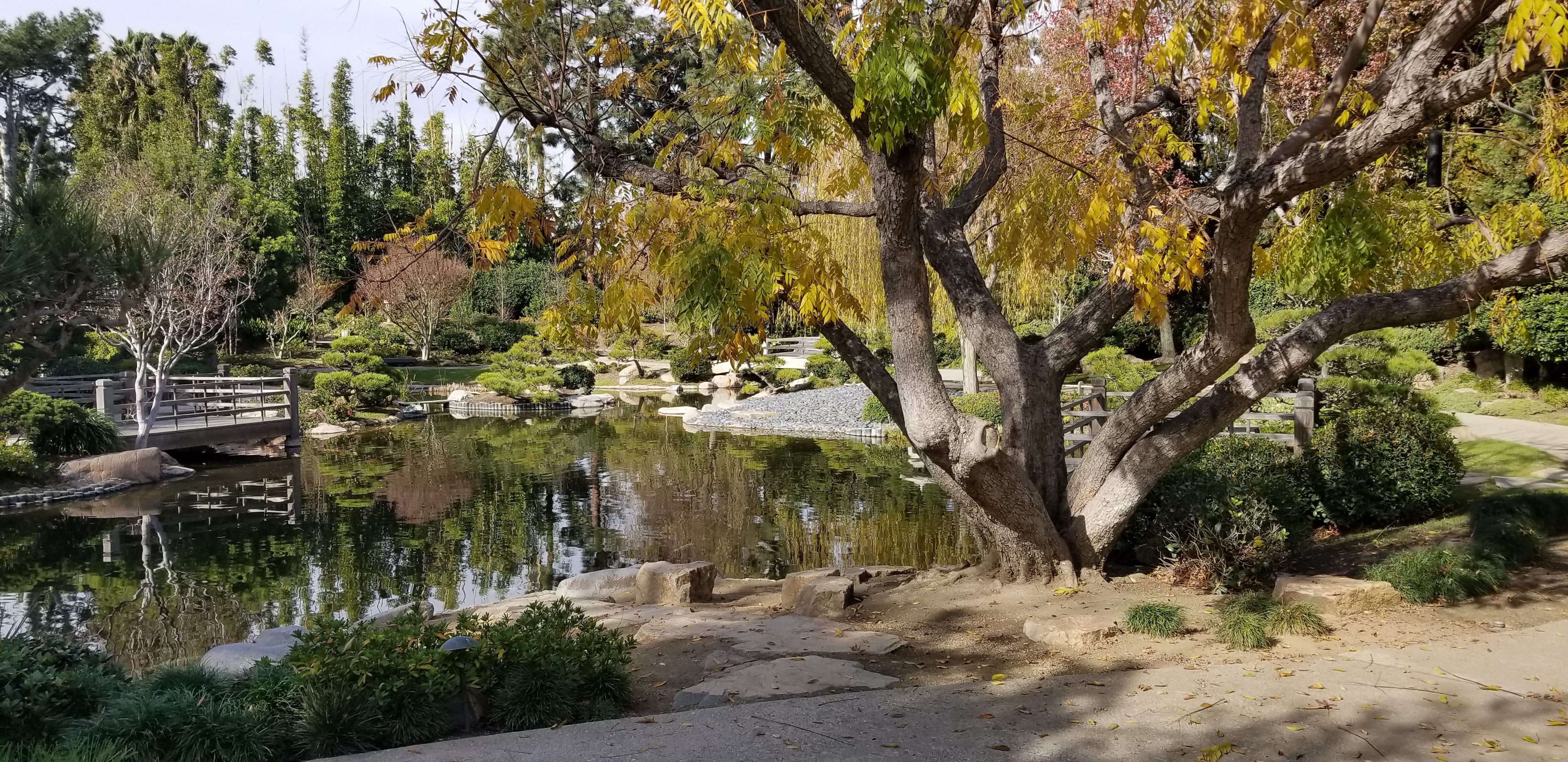
Koi Pond
The main feature of the Garden is the koi pond. Koi fish are a subspecies of carp, originally domesticated for their colors in East Asia around the fifth or fourth century BC. Koi arrived in Japan around 100 AD, with some of the colors common today, but specific breeding for colors did not start until the 1820s. There are several different varieties of koi, differentiated by their color patterns such as:
- Kohaku: Translated as red and white it is a white-scaled koi with large red markings, its most sought-after variant being the Tancho or one with a solitary perfect red circle on its head resembling the Japanese flag.
- Showa Sanshoku: A black-scaled koi with red and white markings, getting its name from when it was first exhibited during the reign of the Showa Emperor.
- Kinginrin: A koi with either gold or silver scales, although variants of other patterns can also have metallic scales.
- Kawarimono: Koi with patterns that do not fit into any defined variant.
Koi breeding usually culls out non-colored or non-desired patterns of koi, and if left to breed on their own, will eventually return to a more natural brown carp color. They usually grow to 3 feet in length, and on average live for 50 years, although the oldest confirmed koi had lived to 226 years old. To tell the age of a koi, you have to look at the scales, since they grow like a tree does, you can count the number of rings, however this damages the koi, so it isn't done while they are alive. They are quite hardy, typical of carp as well, and can handle a fairly wide range of water temperatures, eat a wide range of foods, and are generally resistant to many parasites. In winter, they go into a semi-hibernation state, eating very little for the winter months. They can also recognize people as well, so will likely come swimming if they see people on the shores or bridges. They aren't without their predators though, and at the garden there are many that have appeared in the past. Regular visits from herons and hawks are the primary predators at the Garden, although they can also be preyed on by raccoons, cats, foxes and badgers. The pond is not very deep, being only about 6 feet at its deepest point, but it is estimated that there are at least one thousand koi at any one time in the pond.

Platform Bridge
The first bridge that you encounter is the platform bridge. There are three bridges in the garden, along with other sets of threes throughout the Garden. We call the platform bridge a bridge because it allows visitors to see over the water, even though it isn't used to cross anything. Japanese culture has a tendency to use odd numbers over even numbers, as many of the even numbers have negative connotations. Fours are not used in Japanese culture often because it can be read as yon, or shi, which is associated with death, from the word shinu or to die. In some cases, nine is avoided for similar reasons, as its pronunciation ku is the same pronunciation as in agony or torture, but it is also sometimes considered a lucky number when used as kyu.
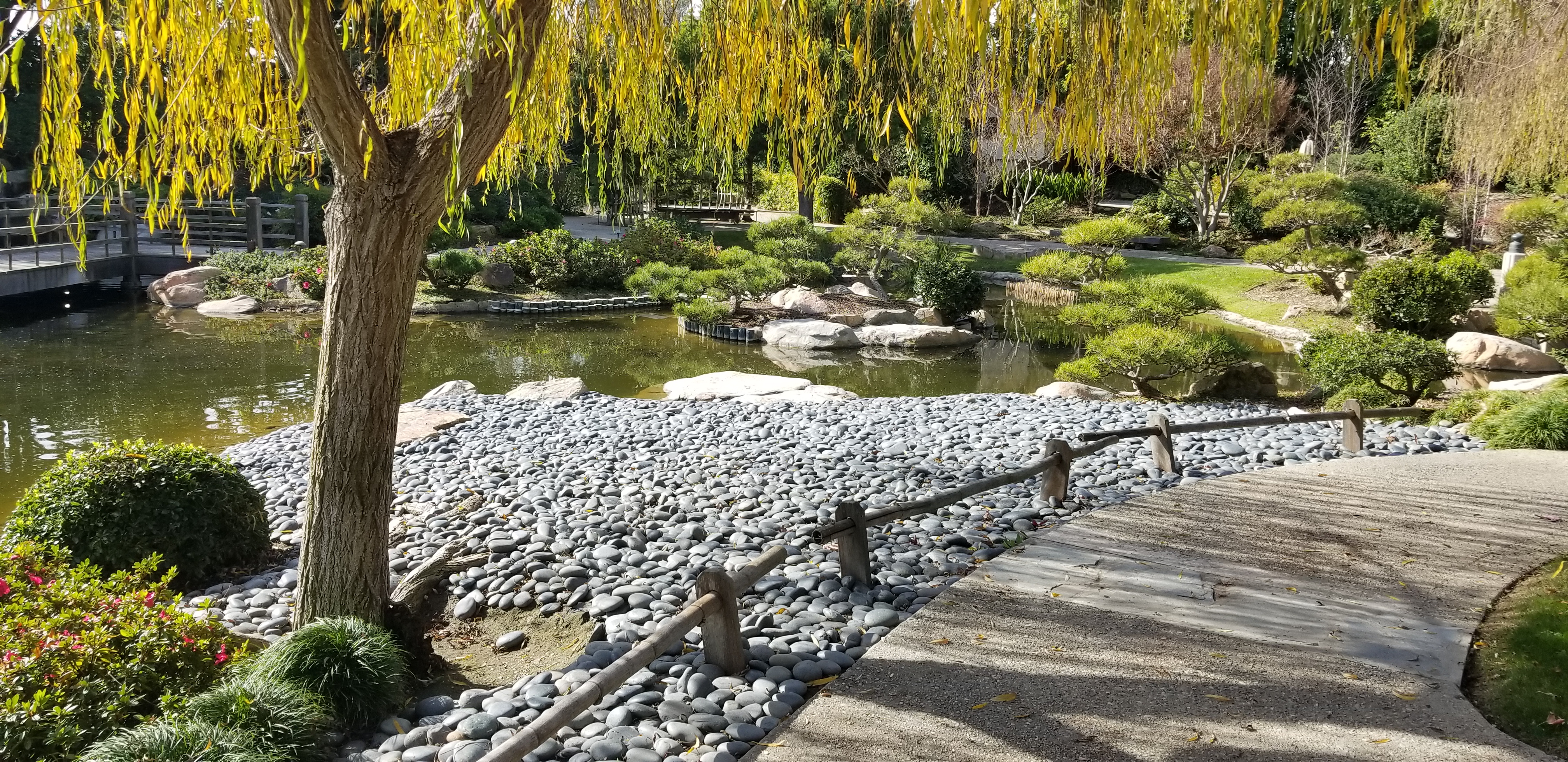
Black Rock Beach
Black rock beach gets its name from the dark color that the rocks turn when they are wet. It also forms the first waterfall in the garden, although in an unconventional way. When it rains, as water comes from the hill behind black rock beach, it cascades down the rocks forming the third waterfall. The rocks are black Mexican Beach pebbles, which are known for the darker color they turn when wet. The rocks used are Mexican Beach Pebbles, creating the appearance of smooth river rocks, and are quite durable, however we do ask that you refrain from throwing them into the plants or into the pond.

Japanese Black Pines
Throughout the garden there are Japanese black pines. These are the same that you would traditionally use for bonsai, just larger. Japanese black pines grow quite slowly, making their real age hard to determine from a simple glance. They are also styled similarly to bonsai, where distinct tiers are made from their branches, and are tied/weighed down to encourage the branches to grow outward instead of upward. The black pines in the Garden are taken care of by the Ueki club, who have experience trimming and maintaining the pines. The black pine by black rock beach is likely the most expensive pine in the entire Garden, with the estimates being ~$20,000 for the tree. Like bonsai, this value comes from how it was maintained and the time invested.
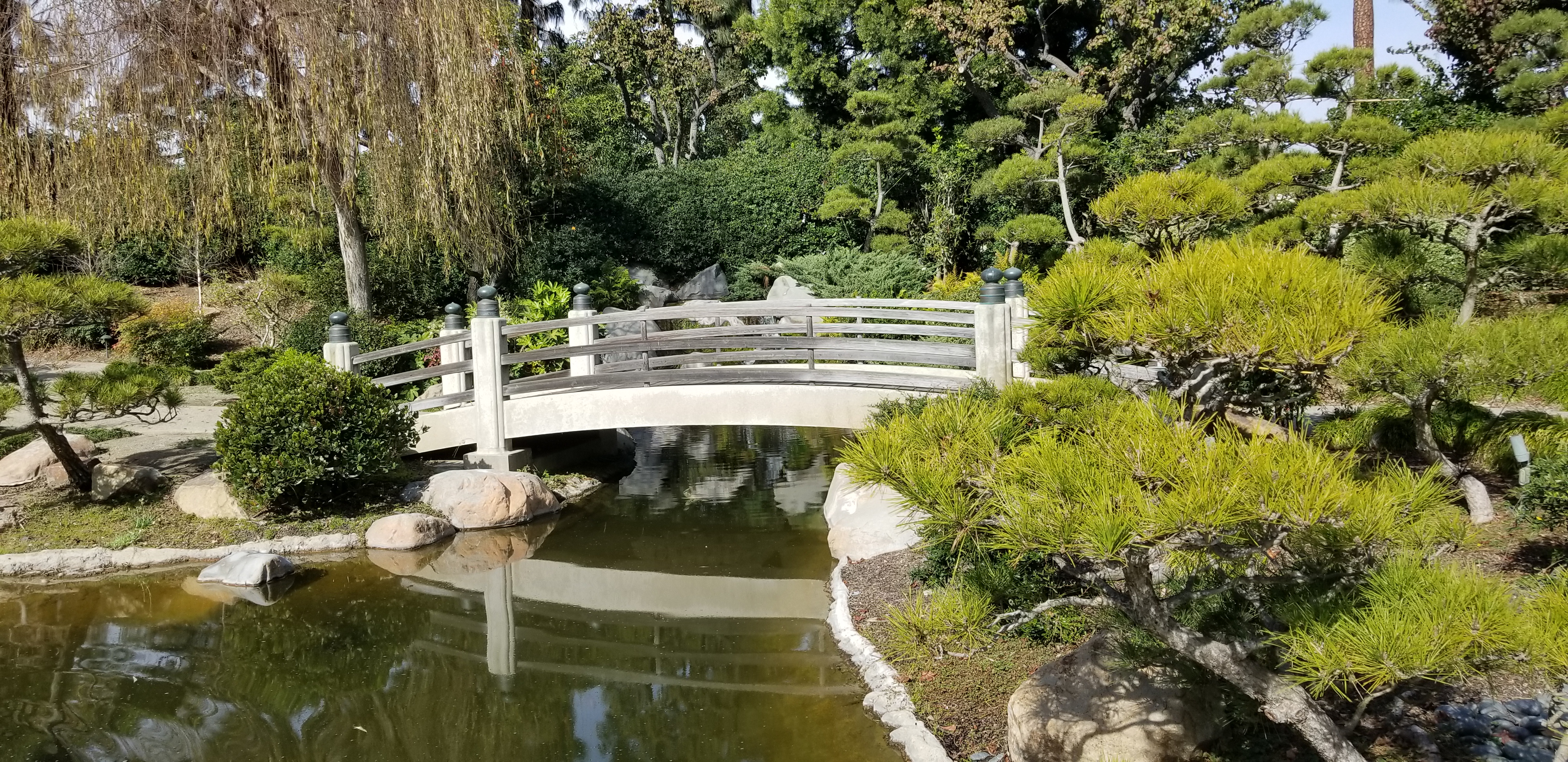
Crescent Bridge
The second bridge is the crescent bridge. A moon bridge forms a circle, or moon, with its reflection in the water, and traditionally, it would be a half-circle, instead of a lower crescent, however, for accessibility it was chosen to be a crescent. Designing a full moon bridge has the advantage of allowing passage of small boats underneath it, while minimizing the lateral space needed to reach the necessary height. However, this can make some bridges difficult to cross, making ascending and descending more akin to climbing a ladder than walking up a bridge.
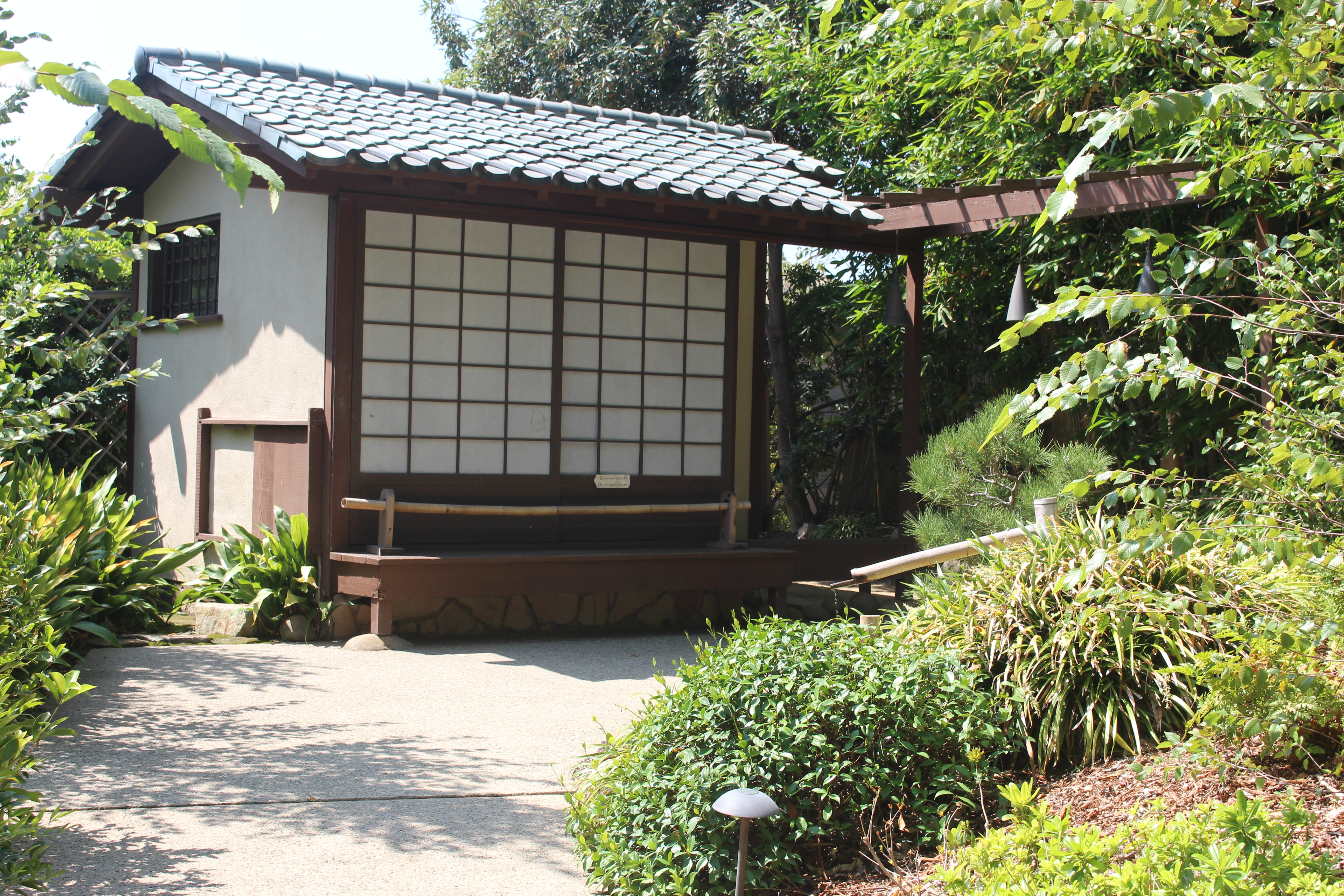
Tea House
Following the left path leads to the Tea House. Traditional tea houses are separate from the main house. This is to create a sense of peace and separation from the distractions of the rest of the world. Tea houses would be located some distance away, sometimes separated by forest to isolate it. This effect is replicated with the tree line between it and the rest of the Garden. The water basin outside would be used to wash hands or face and rinse their mouths, although this is not recommended with our basin. Such basins would also be the only source of water at the tea house, as they usually didn't have running water. To enter the tea house, one has to crawl in from the side, making it impossible for samurai to carry their equipment inside and also showing the host respect from the moment you enter. Inside the tea house, it uses a 4.5 tatami room, based on the number of tatami that fit on the floor. Since tatami are a standard size, Japanese rooms that use them as flooring can be measured using the mats. There are 3 standard sizes for tatami based on the region of Japan, Kyoma (0.955 m by 1.91 m), Ainoma (0.91 m by 1.82 m), and Edoma or Kantoma (0.88 m by 1.76 m), of which the Tea House uses the Ainoma size.
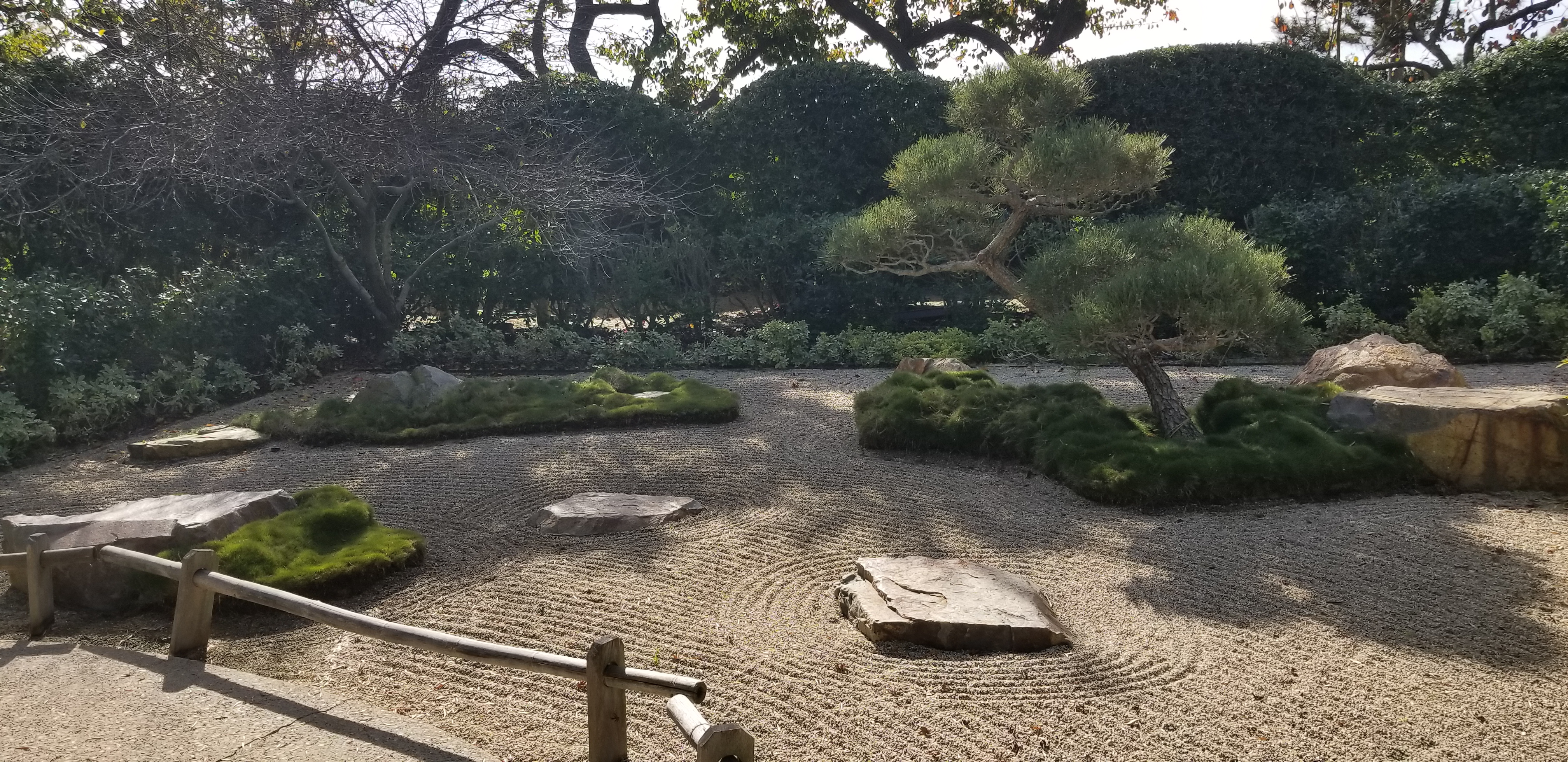
Zen Garden
Down the path from the Tea House is the Rock or Zen Garden. Through the garden three elements are featured, earth, plants and water, despite there being no water used in the Zen Garden. The large rocks represent islands, with the plants on them representing forests. The water is represented by the gravel between the larger rocks, with its pattern forming ocean like waves. Gravel is also used because it is easier to maintain and less affected by weather. Zen Gardens get their name from their use in Zen Buddhist temples where the priests would use the Garden as a form of meditation.
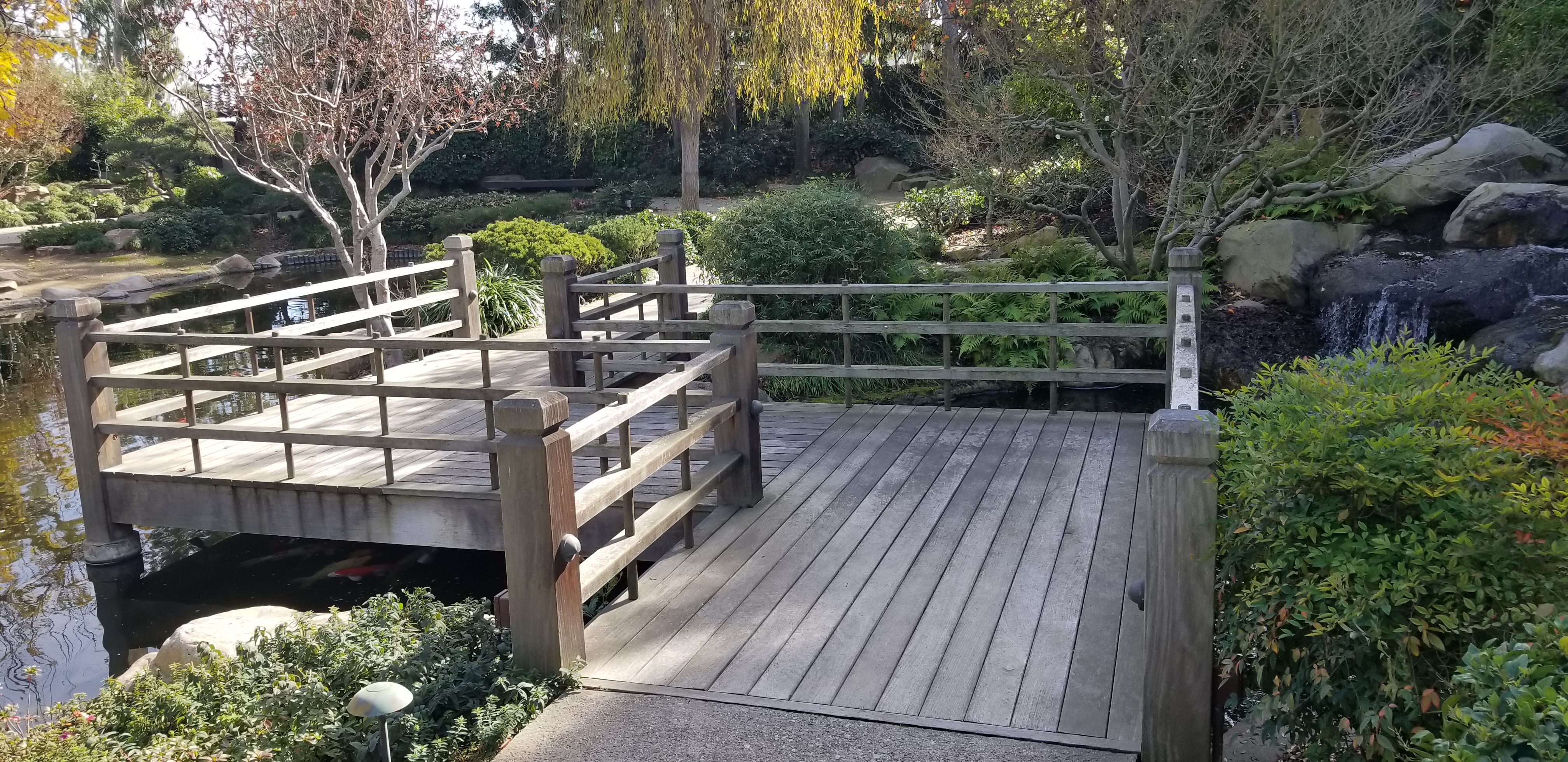
Zig-Zag Bridge
The last bridge is the Zig-Zag Bridge. This bridge is designed as such to help the viewer focus on different aspects of the garden, with each turn, both ways, providing different perspectives of the garden. Sometimes these bridges are designed without railings, to focus the attention of the walker on their current place and time.
That concludes the self-guided tour, we hope that you are able to come visit us soon to see the Garden for yourself. To learn more about the plants featured in the garden, download our plant archive on the Living Collection page.





